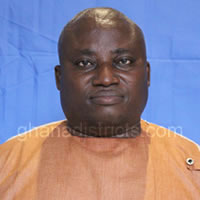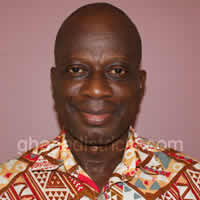POPULATION
Every population has its important elements such as the size, composition and structure. The statistics from these indicators thus provide the bases for socio-economic planning at District, regional and nation levels. The fertility, mortality and migration trends affect the population dynamics.
Population Size and Distribution
The total population for the District according to the 2010 Population and Housing Census is 115,378 comprising 58,039 (50.3%) males and 57,339 (49.7) females. This gives a sex ratio (i.e. number of males to 100 females), of 101.2 (Table 2.1).More so, the share of the population by type of locality, reveals that 18,966 (16.4%) live in the urban areas as against 96,412 (83.6%) who reside in the rural area. The dependency ratio for the District is 90.2 comprising 92.7 for males and 87.8 for females. Urban and rural localities have their age-dependency ratio as 81.5 and 92.0 respectively.
Age-Sex Structure
Figure 2.1 shows the relationship between the age structure and the population distribution by sex.
The results show that Adansi South District has a youthful population (Table 58 and Figure 2.1), consisting of a large proportion (15.6%) of children under 15 years, and a small proportion (4.6%) of elderly persons (65 years and older). The age structure of the District’s population is basically shaped by the effects of high fertility and decreasing mortality rate.
HOUSEHOLD SIZE / CHARACTERISTICS
The average household size of the District is about 4.4. This compared with the average household size of 5.2 in 2000 indicates a decline in household size in the District. The predominant household heads are men. It can be seen from Table 8.1 that the total stock of houses in the District is 20,541 comprising 87 percent in the rural areas and 13 percent in the urban.
Population per house is the proportion of the total population to the number of houses. It can further be seen that the average household per house for the District is 1.2 and that of rural and urban areas are1.2 and 1.8 respectively. The population per house in the District is 5.5, while that of rural and urban areas are 5.3 and 6.9 respectively.
The average household size in the District is 4.4 which is same as that of the country (4.4) and slightly higher than that of the region (4.1). In rural areas, the average household size is 4.6 whereas 3.8 is for urban areas.
Economic Status of Population
The 2010 PHC classified the population as economically active and economically inactive population. Economically active population describes population as employed and unemployed. It also takes into consideration the reasons why a population is unemployed. Economically inactive population on the other hand is the population, which can neither be classified as employed nor unemployed. This category of population was either engaged with household chores, full time education, disable/sick or is on pension/ retired, and for that matter did not seek job within seven days preceding the Census Night.
Table 4 and Figure 6 present the population 15years and older by activity status and sex. The total number of the population that is economically active is 52,919. This figure comprises of 26,512 males and 26,407 females. The population is dominated by employed population (97.2%) which is slightly higher for the males (97.6%) compared to females (96.9%).
This proportion is also mainly (94.8%) for those who work within seven days preceding Census Night.Majority of those who are unemployed (65.9%) are those seeking work for the first time and available for work comprising 69.0 percent males and 63.5 percent females. Whereas the total population 15years and older that are economically not active is 19.8 percent of the population, proportion of the male is 18.9 percent whiles that of the females is 20.7 percent. The Census outcome also reveals that, the figure for economically not active population is mostly pertaining to those who are in full time education (51.1%).
Table 2.4: Population 15 years and older by activity status and sex
Rural – Urban Split
During the 2000 population census the rural population was 63,895 representing 79.9 percent of the population. According to the District Data base 2006 the rural population totaled 76,905 representing 78.1% while the urban population was 21,532 representing 21.9%. The Urban population for 2010 is estimated at 36,667 forming 32.5%. The urban population has been increasing since 1996. The indication for development is that social amenities need to be provided for the ever increasing urban population.
Date Created : 11/10/2017 6:21:52 AM





 facebook
facebook X (twitter)
X (twitter) Youtube
Youtube +233 593 831 280
+233 593 831 280 0800 430 430
0800 430 430 GPS: GE-231-4383
GPS: GE-231-4383 info@ghanadistricts.com
info@ghanadistricts.com Box GP1044, Accra, Ghana
Box GP1044, Accra, Ghana